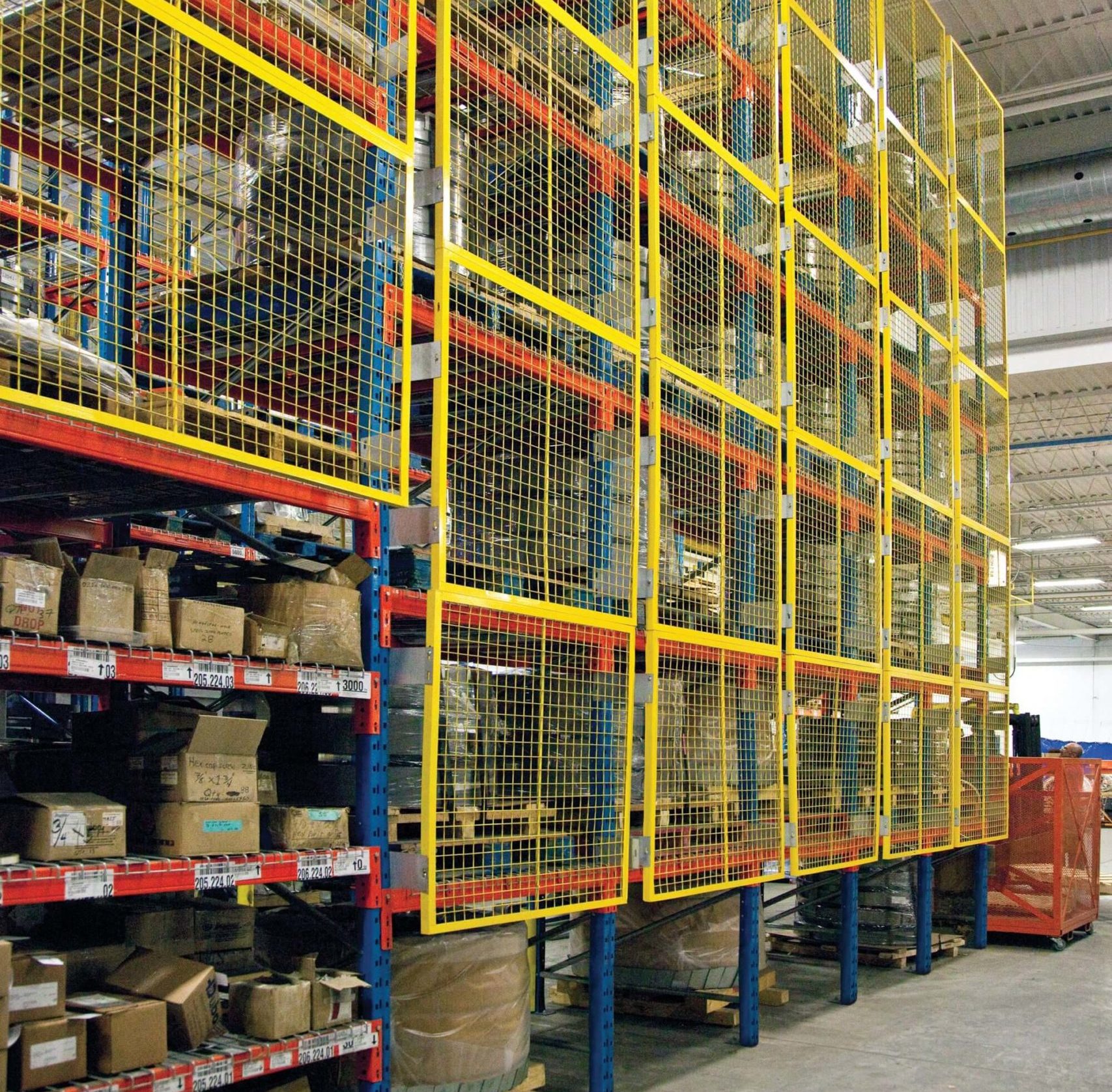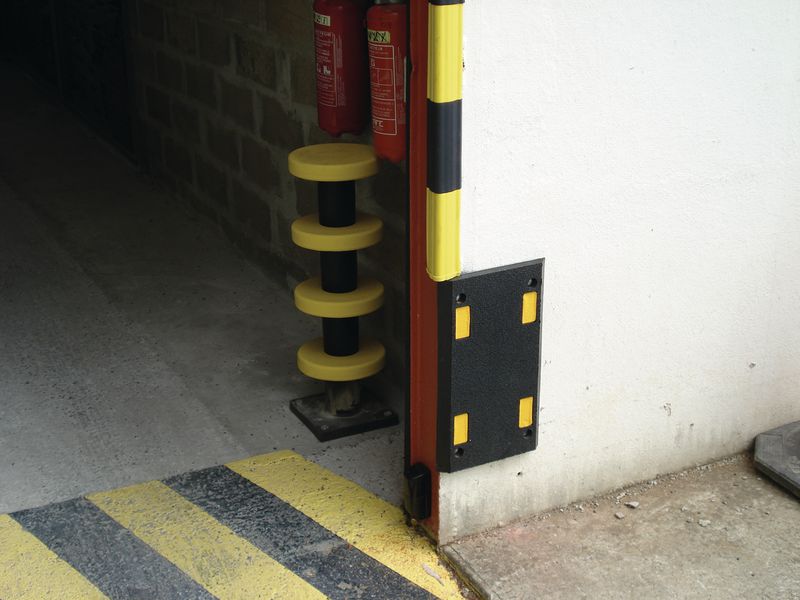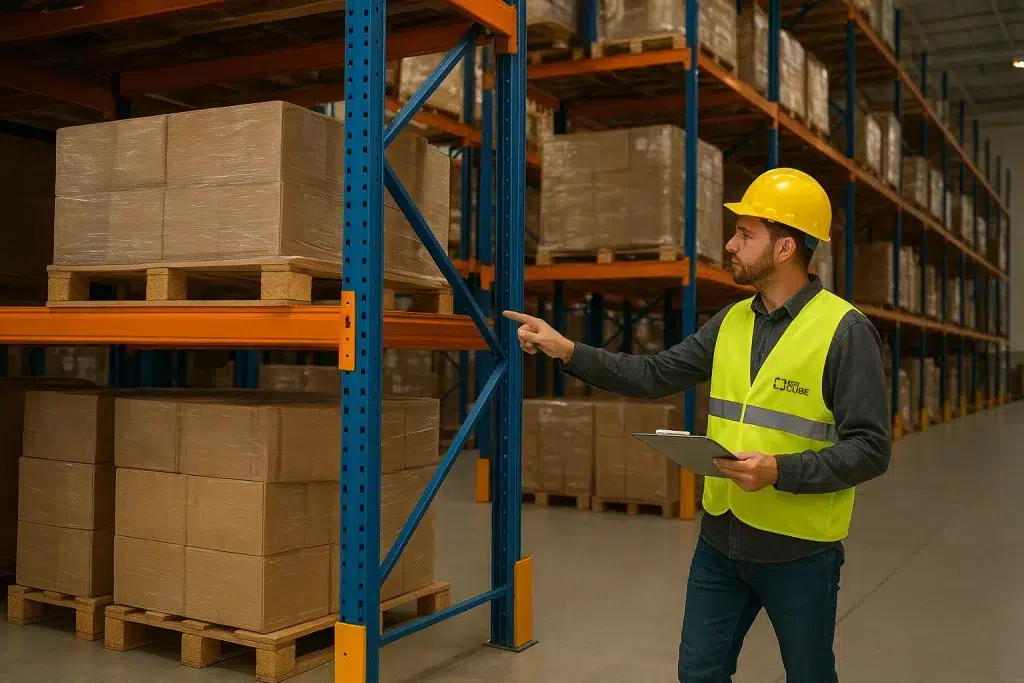Warehouse safety is a major issue for the protection of employees, goods and installations. SUVA lays down precise rules to ensure the safe use of shelving/pallet racks and pallets. Following these rules is essential to avoid accidents, preserve the stability of structures and ensure a working environment that complies with standards.
Securing pallet racks
Shelving is at the heart of logistics storage. Their solidity and stability determine the overall safety of the warehouse. To operate them safely, a number of points must be respected.
Fixing and general condition of the racks
- Shelving must be fixed to the floor or wall to prevent it from tipping over.
- They must be corrosion-free or have only tolerable surface corrosion.
- According to the SN EN 15620 standard, certain deformations are permitted within specific limits:
- Maximum deflection of uprights: 3 mm.
- Maximum deformation of spacers: 10 mm.
- A rack showing signs of excessive deformation, advanced corrosion or overloading must be emptied immediately. It must not be used until it has been repaired or replaced by a competent body.
This vigilance not only prevents costly collapses, but also protects workers working nearby.
Compliance with maximum load
Each rack is designed to support a specific maximum load. Exceeding this limit jeopardises the integrity of the structure and the safety of personnel. Operators must therefore be aware of and respect this essential fact.
Mandatory labelling
The maximum permissible load must be clearly displayed:
- Theload capacity label must be legible and understandable to everyone.
- It must be placed directly on the rack or in a visible location nearby.
A good display reduces errors and enables both forklift drivers and warehouse staff to handle loads in complete safety.
Safe use of pallets
Pallets play a central role in the transport and storage of goods. Their condition and correct use are crucial to the stability of the racks.
- Only pallets in perfect condition should be used: no cracks, rotting or excessive wear.
- The dimensions of the pallets must match the arms of the racking to avoid any imbalance.
- They must always be installed correctly, i.e. on their studs.
- The distances between pallets must comply with SN EN 15620, particularly in relation to the height of the supports.
One bad pallet can weaken an entire pallet rack. That’s why regular checks on their condition must be part of internal safety procedures.
Making traffic routes safer


A safe warehouse is not just about stable racks. Safe movement is just as important in limiting risks.
Traffic conditions
- The warehouse must be adequately lit so that operators can move around with their loads in complete safety.
- The width of the aisles must be adapted to the dimensions of the handling equipment and the goods being transported.
- Manoeuvring must be easy and take into account the turning radius of the vehicles.
Pedestrian protection
The cohabitation of machinery and pedestrians is a source of danger in warehouses. To avoid collisions:
- Safety barriers must block pedestrians in narrow aisles when a machine is in use.
- In areas where pedestrians pass under shelving, appropriate protection must be installed.
Shelf protection
Areas accessible to handling vehicles must be equipped with specific protection:
- The feet of the racks must be protected by devices at least 30 cm high.
- These protections must be firmly fixed to the floor, but never directly to the racking.
Protecting employees

In addition to the structures and organisation of the space, safety requires constant vigilance with regard to employees.
- All employees must receive regular training and certification appropriate to their position.
- Wearingpersonal protective equipment (PPE) such as helmets, safety shoes and reflective waistcoats is often essential.
- Checks must be carried out regularly:
- Weekly visual inspection by supervisory staff.
- Thorough annual check by an approved specialist.
Safety, a shared responsibility
Warehouse safety is a collective task. The rules laid down by SUVA concerning pallet racking and pallets can considerably reduce the risk of accidents.
But it’s not just a question of applying standards: a safety culture also needs to be put in place. This involves raising awareness, internal communication, regular checking of installations and setting up a system for reporting anomalies.
Finally, it is strongly recommended that you draw up a crisis management plan so that you can react quickly and effectively in the event of an accident, despite all the precautions taken. Because while logistics is all about performance, the absolute priority is always the same: people’s safety first and foremost.

